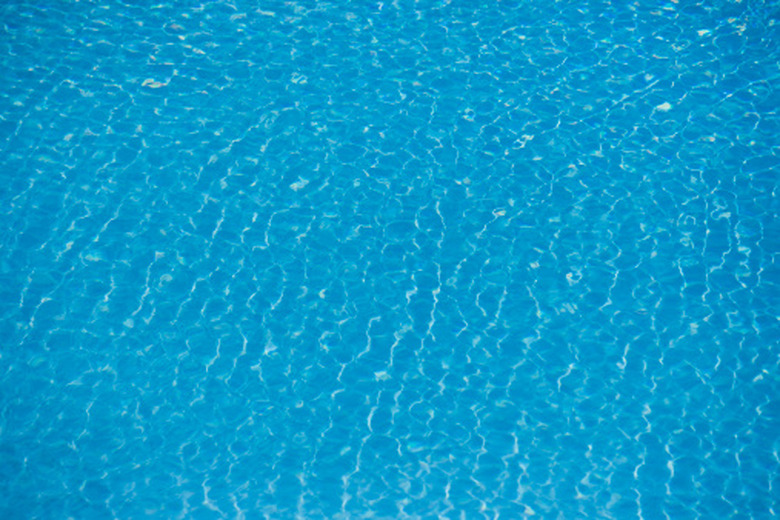How To Remove Copper Sulfate From Water
Copper sulfate is used in some products sold to eliminate algae from swimming pools. This chemical can stain the pool surface and cause cloudiness in the water. The best solution to avoid these side effects of copper sulfate in the future is to use an algaecide that does not contain copper sulfate. If your pool currently contains copper sulfate, you can remove it using a straightforward procedure.
Step 1
Test the water in your swimming pool using a pool chemistry test kit to determine how high the copper sulfate level is. Make sure that the kit you purchase includes a test for copper sulfate. Follow the instructions on the kit for testing the level of copper sulfate.
- Copper sulfate is used in some products sold to eliminate algae from swimming pools.
- Test the water in your swimming pool using a pool chemistry test kit to determine how high the copper sulfate level is.
Step 2
Add a chelating agent to the water in a quantity per the instructions on the label according to pool size and the level of copper sulfate that is present. The chelating agent will bind with the copper sulfate and allow it to be carried away in the pools filtration system. Chelating agent is sold in liquid form and can be purchased inexpensively from a pool supply store. Your local pool store will give you guidance for purchasing the right chemical for removing copper sulfate from your water. Handle it with the same care as you would any other pool chemical.
Step 3
Allow the chelating agent to circulate in the pool for several hours. Test the water again and if the copper sulfate is still present at a high level, add more of the chelating agent and let it circulate.
- Add a chelating agent to the water in a quantity per the instructions on the label according to pool size and the level of copper sulfate that is present.
- Test the water again and if the copper sulfate is still present at a high level, add more of the chelating agent and let it circulate.
Remove Moss From Trees With Copper Sulfate
Choose a day with little or no wind and no expected rainfall within 24 hours to spray your trees. Use the spray during the dormant period when there are no leaves on the tree. Do not spray evergreen trees, because the copper sulfate may burn the foliage. Put on protective clothing, including a long-sleeve shirt, long pants, gloves, a face mask and eye protection before handling the copper sulfate powder. Mix 2 tablespoons of copper sulfate powder in 1 gallon of water.
Things Needed
- Chelating agent for copper sulfate
- Pool test kit
Tip
Purchase a kit that includes copper sulfate testing from your local pool supply company.
References
- Clemson University Cooperative Extension Service: Moss & Algae Control in Lawns
- Alabama Cooperative Extension System: Moss and Algae Control in Lawns
- Oregon State University: Chemical Control of Moss on Trees and Shrubs
- National Pesticide Information Center: Copper Sulfate General Fact Sheet
- National Pesticide Information Center: Copper Sulfate Technical Fact Sheet
- University of California Statewide IPM Program: Tribasic Copper Sulfate
